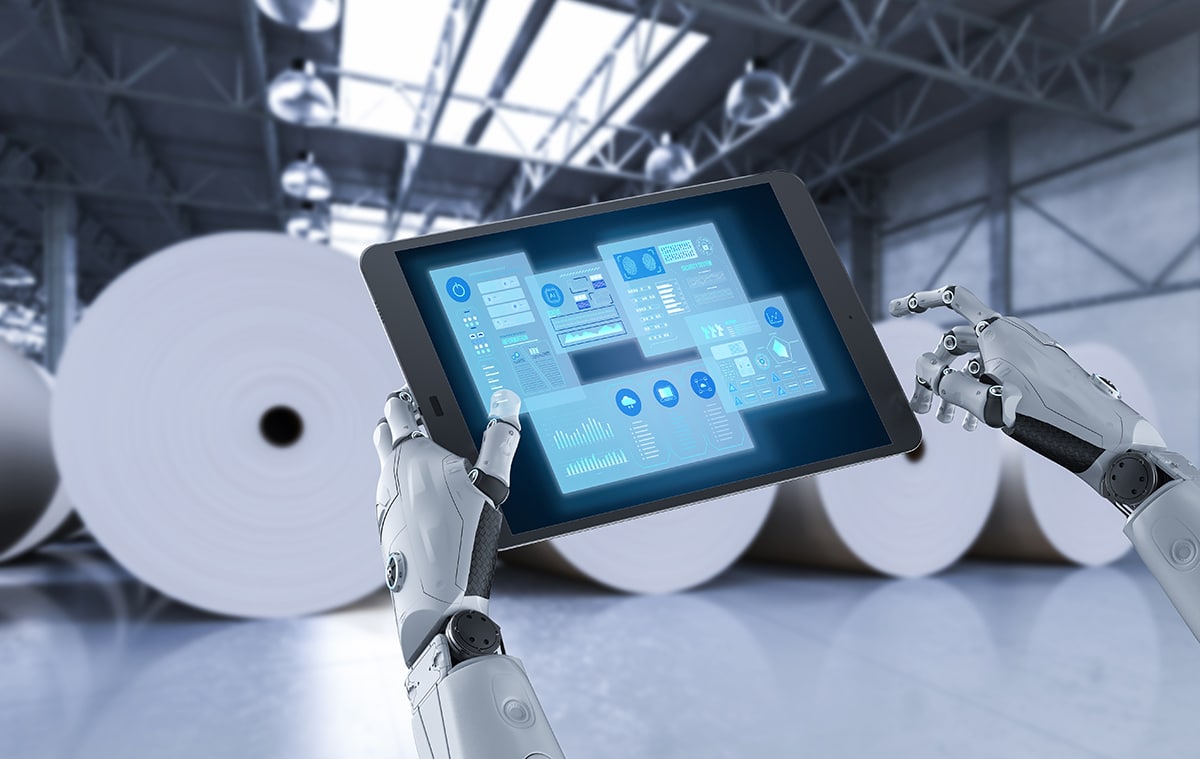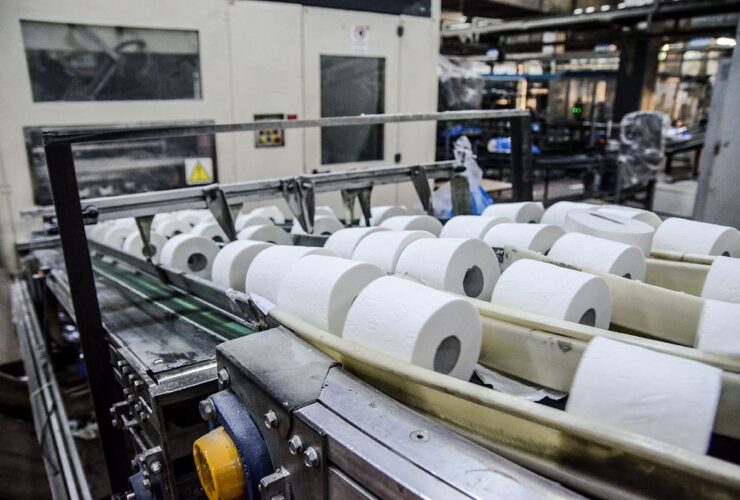A common trend we hear from pulp and paper mill teams is a shortage of hourly and professional workers. A central issue is that many incoming applicants are unwilling to sign up for the available positions. As a result, management is typically faced with filling the least desirable job in a mill.
For example, forklift drivers move finished products from unitizers to warehouses or retrieve finished good loads to fill an outgoing order to a customer. These positions are hard to fill because they are monotonous, typically have quotas to meet (e.g., so many loads per shift), and are bid off as soon as possible. Yet, these are the type of positions that are strong candidates for automation. With that as a preface, read on how manufacturing management is adapting to labor shortages and how they can help overcome the bias of adding automation in the form of “robots” to fill their labor shortages.
More Robots, More Jobs; Fewer Robots, Fewer Jobs
This week’s column is a re-post, used with permission, from Control Engineering Magazine. It’s a short, great read on the challenges facing automation in industry and how the media is missing the point: Automation Doesn’t Destroy Jobs; it Creates Them! Read the online version here.
Think Again: Automation creates jobs: When more has been invested in robotics in the U.S., unemployment has fallen, and when less is invested in robots, unemployment has increased, said statistics cited by Association for Advancing Automation and others.
- A positive correlation has been cited between robot investment and job creation, a nuance overlooked by most mass media, which tends to favor sensationalist headlines like “robots are killing jobs,” according to Jeff Burnstein, president of the Association for Advancing Automation.
- Perceptions to the contrary run rampant, perhaps, in part, because the U.S. federal government spends less than other industrial nations on worker training and retraining for the increasingly digital, high-technology manufacturing workplace. Thus, displacement may create more pain than opportunities, but he said it doesn’t have to be that way.
Automation, competitiveness “Ask companies how many jobs they’d have if they hadn’t invested in automation,” Burnstein suggested to the audience of automation industry leaders. (An anticipated 650 were expected to register for the A3 Business Forum in January, a new record, along with another record growth in U.S. robotic investments.) “Many manufacturers I ask say they’d have no jobs if they didn’t automate critical processes because they’d be out of business, unable to compete,” Burnstein said, giving multiple examples. For example, he said China is investing in robotics in record numbers to remain competitive in global markets as labor costs rise. When robot sales increase, unemployment falls; when robot sales fall, unemployment increases, a trend that’s held from 2010 through 2016, the most recent year for which data was available.
Productivity is critical to growth and competitiveness, Burnstein said, because greater profits bring more investments and more jobs. Amazon invests highly in automation, with over 100,000 robots; he said the company plans to add 100,000 more jobs within 18 months. Further, Burnstein reminded the audience that technology has continuously changed the nature of employment. As technologies were applied to farming, more food of higher quality was produced with fewer farmers, and people learned new jobs. Focusing on fears, Burnstein said, takes attention away from opportunities. He added the U.S. skills gap is real and requires attention so that workers can be reapplied in higher-value areas.
Applying talent in other areas

More Qualified Workers Needed

Appealing to Millennials
Beaulieu relayed some of his experiences with millennials to help with job retention. He said that TR Economics has 52 employees; most are millennials. Some advice:
- Talk with them. They’re the most innovative generation yet and have energy. They have idea after idea. They understand processes better. Generally, they’ll suggest a better way to do something after three months. Respect and listen to them.
- Work/life balance. They may not work the traditional 8:30 a.m. to 5 p.m. at their desks. “They believe in this work/life balance crap. They are expensive, and they don’t work as we do. I had one tell me I was killing him; he worked 45 hours for two weeks.”
- Worker retention. If millennials sense they’re helping you change the world, you have a better retain them better vision and how they fit in.
- Feed them. Put out snack bowls. “We have lunch for our staff twice a month. Feed them. He added that they may never leave now; they think I’m their dad.
- Cultivate new leaders. By 2036, most baby boomers will be dead, which will help us out of the “decade of the downturn that starts in 2030. Just try not to let the kids hurry you along,” he advised.
STEM: Schooled by a 10-year-old

An estimated 500,000 students will be touched by FIRST Robotics this year. Flores said the goal isn’t to use kids to build robots but to use robots to make kids that take on the challenges of the future. Flores added the finals would be in April in Houston and Detroit and are free for the public to attend. So if you don’t have time to advocate for an automation transformation, think again about where we’ll be without a dynamic next generation of engineering leaders.”
Our services and solutions are tailored to meet the diverse needs of our industry. For those who are curious to explore further or wish to dive deeper into Pulmac’s offering, simply click here to start a conversation and discover how we can assist.
Additional Resources
- The International Federation of Robotics (IFR) analyzes the top five trends shaping robotics and automation in 2023.
- TAPPI Resource – Additionally, during TAPPICon 2021, A. Celli’s Tom Bentzler made an in-depth presentation, How to Manage an Automated Warehouse and its impact on Operation Planning, 2021 TAPPICon Live (21TAPL). This presentation does an excellent job of highlighting what must be considered to have a successful warehouse automation project.






